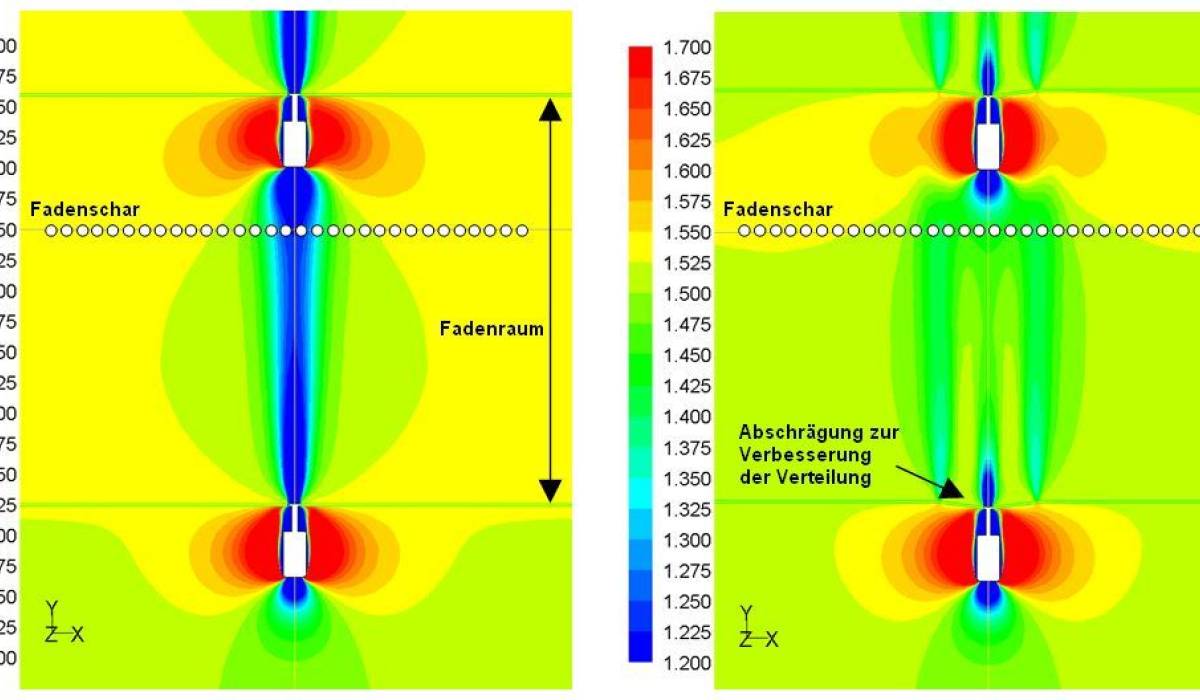As a classical special equipment manufacturer, Münstermann is repeatedly confronted by new process technologies for which, as such, no empirical experience values are available.
The flow behaviour in thermotechnical plants is therefore previously simulated for new, complex tasks prior to construction and the construction of the plants adapted to the simulation results.
Drying of carbon fibres
One example of the use of computer-supported flow simulations is a current project with the task to dry carbon fibres. These carbon fibres are required for a large number of applications. Prominent examples include aircraft wing panels or wind power plant wings.
The carbon fibres must be dryd at various places during the production process. For this purpose they run through driers which must have a homogeneous temperature and speed distribution of the drying air in the passage area, the thread space. This ensures even drying of all the fibres. The drier dries a thread sheet consisting of several individual threads on a maximum residual dampness of < 0.1%. The driers are heated using thermal oil in the application case shown here. The driers themselves consist of several virtually identically constructed drying zones.
Due to the temperature and speed profile in the dryers, the flow behaviour in the plant was simulated in collaboration with the FH Münster (University of Applied Science, http://www.fh-muenster.de) in Münster.
Simulation results
Based on the flow simulation, detailed improvements were carried out on the drier. Through constructive measures, the temperature and speed distribution could be kept very homogeneous. An optimised temperature distribution on the thermal oil side was realised in the heat exchanger via multiple crosswise counterflow-operating mode. As a result, even heat transfer to the airflow follows.
Theory and praxis
The simulation results have been confirmed using empirical measurements. The variation of the flow speed is not only in the range of the simulated tolerance of ± 5% (refer to Illustration 4), but is even better than the theoretical value with a maxim measured variance of ± 3%. In addition to technical flow improvements, it was possible to realise a highly compact construction style based on the simulation results.
Due to the compact design it is possible to achieve a reduction in assembly costs up to approx. 50% compared to traditional structural methods with a height of 6 metres. The compact structure results in additional mate-rial savings of approx. 25% and lower transport costs.


